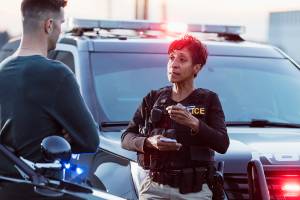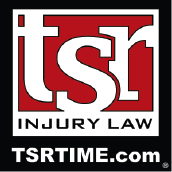Staying Safe if You Try to Gather Evidence After a Car Crash
 We have all seen drivers standing by their wrecked cars surveying the damage or exchanging insurance information. Most drivers passing by are careful to avoid the damaged vehicles.
We have all seen drivers standing by their wrecked cars surveying the damage or exchanging insurance information. Most drivers passing by are careful to avoid the damaged vehicles.
However, it can be dangerous to get out of your car on a busy street or highway. Passing cars may be traveling much too fast to avoid a collision, putting your vehicle at risk of further damage and you at risk of severe or even life-threatening injuries.
It is important to remember your safety is your number one priority after a crash. You may be concerned about gathering evidence for your insurance claim, such as taking pictures of the damage to your vehicle. While this is important, you do not want to put yourself in harm’s way just to get a picture.
Below, learn more about staying safe when trying to collect evidence after a crash, including when it may be best to simply stay in your vehicle.
The Minneapolis-based auto accident lawyers at TSR are prepared to manage every step of the legal process on your behalf, including the investigation of the crash. Schedule an initial consultation today to learn more.
Getting Out of the Path of Traffic
Whenever possible, move your vehicle out of the path of oncoming traffic. If there is a shoulder to the road, move as much of your car into that area as possible. You should also turn on your hazard lights to help alert approaching drivers of your stopped vehicle. Some drivers have an emergency kit with road flares, and these can also be helpful.
You should not count on passing motorists to drive defensively or even to see you. You have probably heard about the epidemic of distracted driving – many drivers are not fully aware of the other cars around them, much less disabled or wrecked cars on the roadside.
Should You Get Out of Your Car?
If your vehicle is out of the path of oncoming traffic, it may be safe to get out and exchange information with the other driver and survey the damage.
However, be careful about getting out of your car if you are on the right side of the road, as if your driver’s side door is nearest to the road. If possible, you may want to slide over and get out the passenger door instead. If you get out the driver’s side door, do not stand on that side of the car, as you could easily get clipped by a passing car whose driver is not paying attention or speeding. You may want to walk around to the other side.
It is important to note if you are in a lot of pain and moving around hurts, it may be best just to stay put until the ambulance arrives. If you get out of the car and move around, you could aggravate your injuries and cause new ones. You may think the pain is minor, but it could be a sign of a severe injury. Adrenaline can sometimes mask pain or make it seem manageable, even though it may get much worse later.
Collecting Evidence
If you do get out of your car and want to take pictures, feel free. It is a good idea to watch the road for any passing cars that may be drifting a little too close. You can also use this opportunity to exchange insurance and contact information with the driver and call 9-1-1 unless the other driver has already done so.
If any other cars stop to help or you see pedestrians who may have witnessed the crash, you may want to ask them what they saw. If you get their permission, you can record the conversation on your smartphone for future reference. At a minimum, get all witnesses’ names and numbers so they can be contacted later.
What if the Other Driver Gets Angry?
Sometimes at-fault drivers get angry with crash victims, acting as though they caused the situation. At-fault drivers may also be angry at the inconvenience of having to wait for the police to arrive.
If the other driver yells at you or seems aggressive, it may be best to stay in your car and lock the door until the authorities arrive. Avoid making eye contact because it may set the other driver off. It is best not to engage with someone who is acting aggressively.
Aggression could be a sign the other driver is under the influence of drugs or alcohol. If you think drugs or alcohol may be involved, be sure to tell the police your suspicions when they arrive. They can then decide if it may be necessary to do a field sobriety test or breathalyzer test.
What not to Say After a Crash
Even if you think you may be partially to blame for the crash, it is best not to say anything about it to the other driver. The investigation will uncover whether your actions may have played a role in the collision. Crash victims tend to blame themselves, even if they did nothing wrong.
You should also avoid getting angry with the other driver because it could spark a confrontation. If you focus on collecting evidence and getting medical treatment, you will be doing a lot to help preserve your claim. Meeting with a licensed attorney is also important.
Call TSR Today for Help After a Crash
For more than two decades, the licensed attorneys at our firm have been helping car crash victims recover compensation for their damages. We understand how devastating these situations can be and that is why we are dedicated to pursuing maximum compensation. We are also prepared to go to court if necessary.
Meeting with us after a collision is risk-free, as there are no upfront fees for our services. We do not get paid for representing you unless you are compensated.
Learn more by calling today: (612) TSR-TIME



